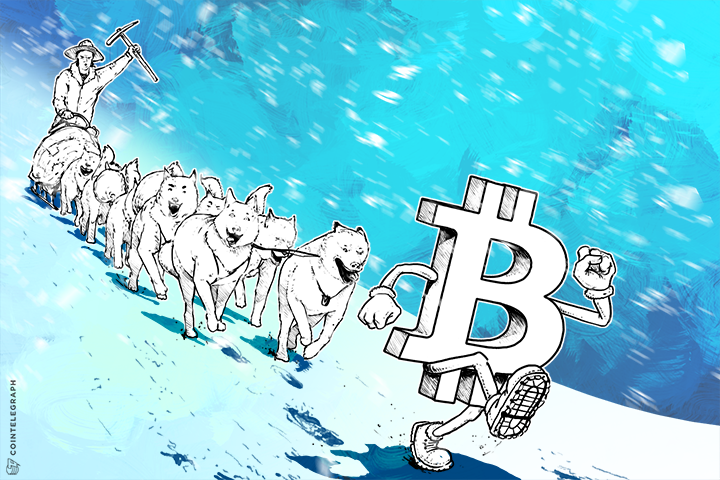The Bitcoin market is entering a phase of faux innovation that seems to be driven by either frustration over having entered the field late in the game, or by outright fraud; sometimes, it is a bit of both.
Instead of starting firms that use Bitcoin or helping the core developers with incremental improvements to the system, pretenders hawk Cryptocurrency 2.0 Bitcoin-killer vaporware, complete with slick logos and promotional videos promising a new life and the chance to begin again in a golden land of opportunity and adventure.
They would have us believe that inventing The Next Big Thing is easier than starting a business or programming; otherwise, they would devote their efforts to those more immediately rewarding endeavors, rather than undertake the arduous task of starting an entire industry from scratch.
This is not to say that no new post-Bitcoin industries will be created. Of course they will! This is to say, however, that it is too early to know what Bitcoin's commercial shortcomings are, aside from crossing the chasm from early adopters to the early mainstream. What passes for Cryptocurrency 2.0—Moneypunk 3.0, for those of us who have been involved in this field for the better part of two decades—is the modern equivalent of someone promoting Automobile 2.0 shortly after the release of the Ford Model T. Yes, Bitcoin is clunky, as was the Model T, but incremental improvements in automobile design over the past century have made more fortunes than have radical redesigns of personal transportation, such as jetpacks, hovercraft, and subterranean maglev trains.
Gold Rushes
Roughly—very roughly—about once each decade, we witness a brief technological Gold Rush, when something that was commercially impossible becomes not only feasible but entrances market participants and observers. Those who embrace this innovation early can ride the wave of its adoption to sometimes great wealth. Those who miss the wave must wait for the next one, and waves come at their own pace.
The timing of the next wave is very difficult, because each Gold Rush bears very little resemblance to previous ones, making them exceptionally difficult to recognize before the fact. Perhaps most maddening of all, each one seems almost inevitable after the fact, even though it initially was met with blank stares.
So it is with the blockchain: Share a copy with all users, thereby solving the Byzantine Generals Problem that had been proven for a quarter-century to be insoluble. hrm. Rather obvious, once someone explains the punch line to you.
In the early 1990s one could register one- and two-letter domain names for resale later, even though the tiny Internet population consisted of academics and geeks. That was no longer possible once mainstream users began to learn about the World Wide Web. Similarly, immediately after the breakup of the AT&T monopoly, it became possible for the first time ever in the
This process has a long history that includes railroads, telegraph companies, car manufacturers, airplane manufacturers, airlines, radio networks, television networks, search engines, space tourism, and whatever comes next. Technically, one could start a new mobile phone company from scratch today, create a new office suite or operating system, or release a new blockchain, but it would make very little commercial sense to do so. It makes much more sense for an entrepreneur to use the existing technology to sell goods and services. After all, what is cryptocurrency, if not a medium of exchange and possible a store of value? You cannot eat it, or even make jewelry with it.
In each Gold Rush, the innovation displaces an incumbent and favors winner-take-all economies of scale, which leads to a market dominated generally by one or a few early adopters.
Sometimes, a swarm of less nimble and less insightful niche players who entered the field late in the game are able to serve specialized, and often lucrative, communities.
However, there is a difference between a boutique that caters to an idiosyncratic audience and Innovation 2.0 that unseats Innovation 1.0, and there is a world of difference between a commercially viable innovation and a solution in search of a problem.
Granted, we are due for our first post-Bitcoin Gold Rush sometime in the next few years, and fortunes will be made in the cryptocurrency field in the meantime, but they will be made by those using Bitcoin, mining Bitcoin—the very backbone of the system!—and developing incremental add-on services.
Bitcoin is not quite yet a moribund, status quo incumbent ripe for replacement.
The promoters of would-be Bitcoin-killers would have us believe that their apps—or, just as likely, their white papers and Powerpoint decks—are as profound as David Chaum's and Satoshi Nakamoto's creations, which while possible, is asking an awful lot of us without at least a working prototype. Much more likely, about as much substance backs them as Web 2.0 would have in 1997, Automobile 2.0 would have a century ago, or Telegraph 2.0 would have a century before that.
Bitcoin is this cycle's Gold Rush.
About the author
Charles W. Evans is Associate Professor of Economics and Finance at
Miami, FL (USA), whose research focuses on Bitcoin; Co-Founder and Executive Director of the Conscious Entrepreneurship Foundation, which promotes Bitcoin among the unbanked worldwide, particularly in small-scale cross-border trade; and a veteran of the 1990s Moneypunk movement, who is saddened to see that those who have forgotten the past are repeating it.
Did you enjoy this article? You may also be interested in reading these ones:
- When Banks Become Law Enforcers (Op-Ed)
- Warren Buffet Wrong About Bitcoin ‘Mirage’ in 2014 (Op-Ed)
- Is Bitcoin to Banks and the American Public ‘as the Boston strangler is to the Woman Home Alone’? (Op-Ed)


